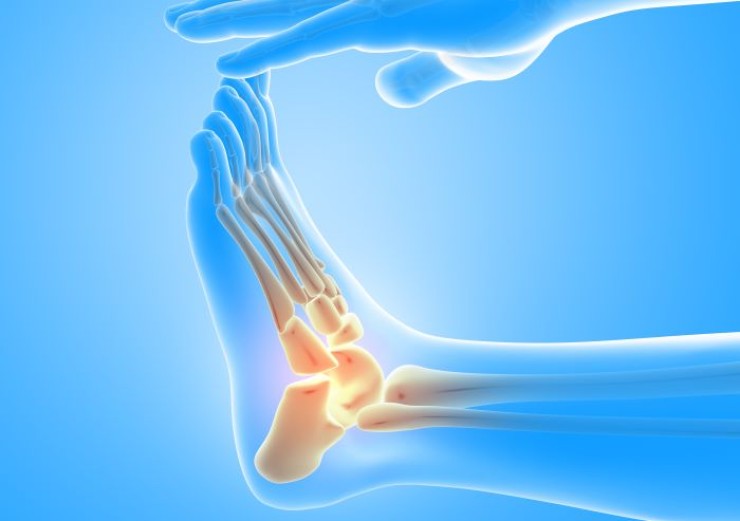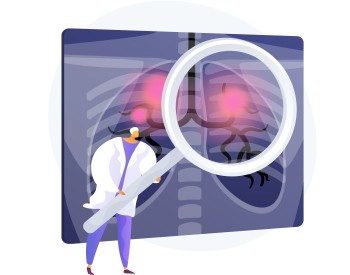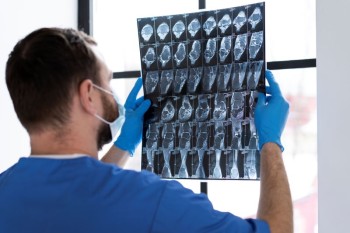
CT Scan for the ankle provides detailed images of the bones, joints, ligaments, and soft tissues in this area.
CT Ankle Scan in India with Cost
CT Scan Ankle in Detail
Introduction
The ankle is a complex joint crucial for mobility, and when issues arise, accurate diagnosis becomes paramount. In this article, we explore the details of CT Scan for the ankle, its purposes, and how it aids in diagnosing and managing various ankle-related conditions.
Purpose and Significance of CT Scan for the Ankle
CT Scan for the ankle provides detailed images of the bones, joints, ligaments, and soft tissues in this area. It is instrumental in diagnosing fractures, sprains, arthritis, and other conditions affecting the ankle joint.
When is a CT Scan of the
Ankle Recommended?
A CT Scan of the ankle is recommended when a more detailed assessment is required for complex ankle injuries or conditions. It is often employed when X-rays alone may not provide sufficient information, especially for intricate fractures, ligament injuries, or joint abnormalities.
Preparation for CT Scan of the Ankle
Preparation for a CT Scan of the ankle is minimal. Patients may be advised to remove any metal objects or jewelry from the ankle area, and they should inform the healthcare provider about any existing health conditions or medications.
Procedure of CT Scan for Ankles
During the procedure, patients lie on a specialized table, and the ankle is positioned within the CT scanner. The scanner captures detailed cross-sectional images, providing a comprehensive view of the ankle's internal structures from various angles.
Benefits and Risks
CT Scans for ankles offer high-resolution images, aiding in the accurate diagnosis of a range of conditions. While generally safe, the procedure involves exposure to ionizing radiation, and the benefits are carefully weighed against the potential risks, especially considering the small size of the area being scanned.
Interpreting CT Scan Ankle Results
Expertise is crucial in interpreting the results of a CT Scan for the ankle. Radiologists analyze the images to identify fractures, ligament injuries, arthritis, and other conditions affecting the ankle. The detailed information obtained guides treatment decisions.
Conditions Diagnosed
Through CT Scan Ankle
CT Scans for ankles are effective in diagnosing various conditions, including fractures, ligament injuries, arthritis, and abnormalities in the joint structures. The detailed images allow for precise identification and characterization of these issues.
Alternatives to CT Scan Ankle
While CT Scans are powerful diagnostic tools, alternatives like X-rays or MRI may be considered based on the specific clinical scenario. Each method has its strengths and limitations, and the choice depends on the information needed for an accurate diagnosis.
Conclusion
In conclusion, a CT Scan for the ankle is a valuable tool for diagnosing and managing various conditions affecting this intricate joint. The detailed imaging it provides ensures accurate diagnosis, guiding healthcare professionals in providing effective treatment for ankle-related issues.
Frequently Asked Questions About CT Scan Ankle
1. What information does a CT Scan of the ankle provide?
A CT Scan of the ankle provides detailed images of the bones, joints, ligaments, and soft tissues, aiding in the diagnosis of fractures, sprains, arthritis, and other ankle-related conditions.
2. How is it different from other ankle imaging methods?
CT Scans offer detailed cross-sectional images, providing a comprehensive view of the ankle's internal structures. This is particularly beneficial for assessing complex fractures and joint abnormalities.
3. Is there any discomfort during the procedure?
No, the procedure is generally painless. Patients may experience slight discomfort from staying still during the scan, but it is well-tolerated.
4. Are there risks associated with a CT Scan of the ankle?
While generally safe, exposure to ionizing radiation is a potential risk. However, the benefits of accurate diagnosis often outweigh the risks, especially for localized scans.
5. How long does the procedure take?
The duration of a CT Scan for the ankle is relatively short, typically taking around 15 to 30 minutes.
6. Can a CT Scan of the ankle detect soft tissue injuries?
Yes, CT Scans of the ankle can detect and provide detailed images of soft tissue injuries such as ligament sprains and tears, aiding in accurate diagnosis and treatment planning.
7. Is contrast dye used during a CT Scan of the ankle?
In some cases, contrast dye may be injected intravenously to enhance the visibility of blood vessels, soft tissues, and certain abnormalities in the ankle during the CT Scan.
8. Can individuals with metal implants undergo a CT Scan of the ankle?
While metal implants may cause some artifacts in the images, modern CT scanners can often produce clear images even with metal present. It's essential to inform the healthcare provider about any implants for appropriate considerations.
9. How soon can a patient resume normal activities after a CT Scan of the ankle?
Patients can typically resume normal activities immediately after a CT Scan of the ankle. Unlike certain imaging procedures, there is usually no recovery time required.
10. Can children undergo CT Scans for ankle issues?
CT Scans for ankle issues are generally safe for children. However, healthcare providers consider the necessity of the scan, potential risks, and alternative imaging methods, especially considering the child's smaller body size.
11. Are there any specific conditions that CT Scan of the ankle is particularly effective in diagnosing?
CT Scans of the ankle are particularly effective in diagnosing complex fractures, subtle bone abnormalities, and conditions affecting the joint spaces, making them valuable in cases where standard X-rays may provide limited information.
12. Are there any dietary restrictions before a CT Scan of the ankle?
In most cases, there are no specific dietary restrictions before a CT Scan of the ankle. However, patients may be advised to stay hydrated, especially if contrast dye is used during the procedure.
13. Can pregnant women undergo a CT Scan of the ankle?
Pregnant women are generally advised to avoid unnecessary exposure to ionizing radiation. Alternative imaging methods may be considered, and consultation with healthcare providers is crucial to weigh the risks and benefits.
14. Is a CT Scan of the ankle the same as an MRI?
No, a CT Scan and an MRI are different imaging techniques. While both provide detailed images, a CT Scan uses X-rays and is particularly effective for visualizing bone structures, whereas an MRI uses magnetic fields and is excellent for detailed soft tissue imaging.
15. How often is a CT Scan of the ankle repeated for follow-up?
The frequency of follow-up CT Scans for the ankle depends on the specific condition being monitored. Healthcare providers determine the necessity based on the patient's response to treatment and the progression of the ankle-related issue.
(0)
Login to continue



